PRF UNI/UR Grantee Stories
In celebration of PRF’s 65 years of awarding grants, recipients of PRF Grants were invited to share their PRF stories. The stories of Undergraduate New Investigator and Undergraduate Research or equivalent grantees are below.
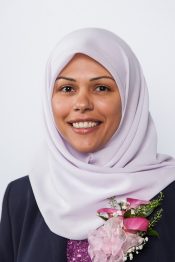
Happy 65th Anniversary ACS PRF! The ACS PRF grant had a major impact on my academic and scientific career. I received it in 2009 around the time of my application for tenure and promotion to Associate Professor. I was one of only three recipients in Canada that year. The grant allowed me to conduct fundamental studies on the surface chemistry of methylated organoarsenicals using infrared spectroscopy and quantum mechanical calculations. It was the seed funding for a research program in my lab that attracted additional funding and awards, most notably the Early Researcher Award by Ontario Ministry of Research and Innovation. We published seven papers in Environmental Science and Technology and the Journal of Physical Chemistry, and I received 10 invitations to speak on this research between 2010-2013. The grant allowed me to train four undergraduate students and three MSc students, one of whom received the Science Gold Medal for Research Excellence. With results from the research funded by the PRF, I attracted more students who expanded the work into more challenging areas, and was able to start new collaborations with US scientists who appreciated the significance of our work. ACS PRF is an influential and impactful program.
Dr. Hind A. Al-Abadleh, Wilfrid Laurier University, Waterloo, Ontario, Canada
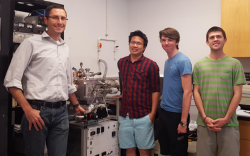
As a new faculty member, the support of the Petroleum Research Fund New Investigator Award kick-started my research program, leading to several presentations and published manuscripts. I was able to leverage these into external funding applications and further publications, which all put me on the trajectory to be recently awarded tenure. Most importantly, the PRF grant funded summer research stipends for 5 undergraduate students. These students learned tangible skills in working with high vacuum instrumentation, mass spectrometry, and computational chemistry, as well as the ability to analyze data, think critically, collaborate in a scientific environment, write manuscripts, and communicate scientific results. These skills positioned the students as competitive candidates for the next stage of their future scientific careers, from graduate programs to NASA internships. This would be impossible without the PRF grant, which allowed these undergraduates (and the PI) to devote great chunks of time to research over the summer.
Dr. Joshua Melko, University of North Florida, Jacksonville, FL
As a new faculty in a minority-serving undergraduate institution with limited opportunity for funding, the ACS-PRF grant was immensely beneficial. The ACS-PRF grant funded my group’s research efforts (now published in high-quality peer-reviewed journals), provided stipends for undergraduates in the summer months, and financed the presentations of my group’s research at the national meetings of the American Chemical Society. From a faculty-development perspective, being able to secure an early ACS-PRF grant leading to the peer-reviewed publications made the road to tenure less stressful. The students (largely of minority origins) who worked on various research projects also benefitted from the ACS-PRF grant. For instance, all of the research students supported by the ACS-PRF grant are now in notable graduate programs and medical schools. To the benefits of the broader research community, the ongoing quantitative study of solvation effects in noncovalent interactions is an invaluable addition to the toolkit of molecular-recognition science. It is an age-old knowledge that molecules interact through noncovalent interactions, but the role of solvation in mediating these interactions has been a complex process to understand. The ACS-PRF grant has enabled the commencement of my research program in this area of molecular science. Many thanks for the support!
Dr. Bright U. Emenike, State University of New York, College at Old Westbury
My ACS-PRF grant was my very first research grant and really helped to get my academic career at Oberlin started. 20 years later, I still remember the excitement of receiving funding for that first proposal. The nearly 50 undergraduate research students that have worked in my lab over the years continue to reap the benefits--funding from ACS-PRF grants went towards supplies/accessories for an arc furnace and glovebox that are both still operational!
Dr. Yumi Ijiri, Oberlin College, OH
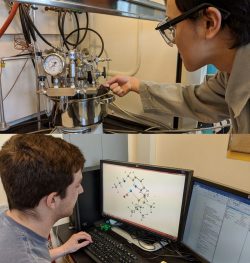
Anthony Chianese began as an Assistant Professor at Colgate University in 2006, and received a PRF-UNI grant in 2007. This funding was essential in initiating his independent research career, and led to his first independent publications. In particular, this funding supported the development of iridium complexes supported by CCC-pincer ligands that were active catalysts for a variety of C-H functionalization reactions. Seed funding from the PRF gave Professor Chianese the resources needed to acquire important preliminary results that supported his first successful application for federal funding, through the NSF Research in Undergraduate Institutions program. Since 2011, Professor Chianese's research has been continuously funded through the NSF-RUI program. To date, 45 undergraduate students have conducted research in his group. Twenty-eight of these students have co-authored at least one peer-reviewed publication. Seventeen have entered PhD programs, and nine have gone on to medical school. The photo shows two current seniors in the Chianese group. John Pham (top) will start a Ph.D. program at Brown University this fall, and Eamon Reynolds (bottom) will start at Ph.D. program at the University of North Carolina - Chapel Hill. Startup funding from the PRF was an essential catalyst in launching Chianese's career as a chemist.
Dr. Anthony Chianese, Colgate University, Hamilton, NY
My new PRF UR grant has been essential to a mid-career research pivot and to rebuilding my research group in a new direction after a research sabbatical away from Hope College. I've got three freshmen who've just started in the past few months and two sophomores who were ready to start when we moved remote for COVID19 - glad to know the money is there to fund what we can even now, and we're all raring to go once we can be back in lab.
Dr. Jason Gillmore, Hope College, Holland, MI
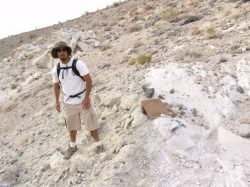
As a professor at a non-PhD-granting, Hispanic-serving institution, I benefited greatly from both a PRF "B" grant and a PRF sabbatical grant. Besides funding the projects proposed in those grants, these PRF grants were the springboard for two funded NSF grants. All of the project funding I have received has, in some way, PRF funding at the core. These PRF-based projects provided funding for analyses, field research and travel to meetings for me and over 36 undergraduate and 14 M.S. student theses. Most students describe these experiences made possible by PRF funding as a highlight of their academic careers. The PRF grants also included salaries for students to work in the lab and the field, thus providing much-needed income for many students in underserved populations. Most, if not all, of the students are currently professional geologists, which puts PRF funding in the direct lineage of these young geoscientists. From a personal standpoint, I would not have had the academic career that I've had, however humble it may be, without PRF. I am greatly appreciative of the opportunities PRF has provided me.
Dr. Jeffrey R. Knott, California State University, Fullerton
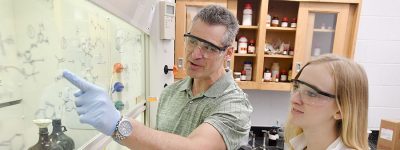
I began as an Assistant Professor in 1994 at an undergraduate institution that was just beginning to value faculty research with students. I was expected to conduct research and publish results, but very little institutional funding was available. I nervously stared at a near-empty research lab that lacked many of the bare necessities of organic chemistry research, and wondered how it would all come together. I was delighted that the Petroleum Research Fund offered a grant program to beginning faculty members at PUI's, and I was excited to be awarded a 1995 PRF grant that helped me establish a modern lab, attract summer research students, and begin collecting experimental data that led to several of my first independent scientific publications. Success with PRF undoubtedly led to my success with other funding agencies soon thereafter. Without a doubt, PRF planted the seed that made it possible for me to still be actively engaged in research with undergraduate students some 25 years later. I am eternally grateful to the Petroleum Research Fund for their early faith in me, and I continue to be a strong believer in their mission.
Dr. Gary W. Breton, Berry College, Mount Berry, GA
After grad school, I decided to accept a teaching position at a small undergraduate college which would put minimal demands on research productivity. I loved teaching but I had found my graduate research experience unfulfilling. In my second year, I was able to teach organic chemistry and my need to explain reactions to my students made me more careful in accepting textbook explanation that didn’t quite fit my understanding. In my spare time, I began to probe into these ideas and sent a grant proposal to PRF. When it came through, I was ecstatic and motivated to pursue research further. All my proposed ideas got published; unfortunately, by other people. I realized that I could not compete with graduates research departments and looked to find research topics that were currently less popular. Although teaching remained my greatest pleasure, I greatly enjoyed research and have since published a fair number of articles and received a few grants. PRF was a large part of my early encouragement and I received another grant from them forty years later to bookend my career in chemistry. That grant supported a few publications. Thanks.
Dr. Hilton M. Weiss, Bard College, Annandale-on-Hudson, NY
Two years after starting my first tenure-track position at a PUI, I began to realize that my “sure thing” project was not working well in an undergraduate environment. A proposal to the PRF on my “long shot” backup project was funded, enabling me to explore a new research area. Almost thirty years, and more than 130 undergraduate coworkers later, I’m still expanding upon on ideas that were generated under that award. The PRF grant lead to support by NSF and other agencies and in 2003, PRF provided me with another opportunity. Under an unfortunately short-lived program, I was awarded an Undergraduate Faculty Sabbatical grant that supported a one-year leave to Grenoble, France. In addition to being a transformative experience for me, it opened doors for my students to work with my contacts and collaborators in Europe. During that year, I was also able to attend a conference in Australia. This eventually led to another sabbatical as a Fulbright Fellow in that country. Collaborations resulting from that experience have proven very fruitful and have included several exchanges of students in both directions. As I write this, our latest joint paper has just gone to press and I am hoping to be able to send another student to Oz as soon as the current pandemic subsides. I’m immensely grateful to the PRF for opening the door to a rewarding career.
Dr. Timothy W. Hanks, Furman University, Greenville, SC
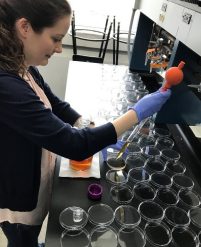
Receiving an ACS PRF Undergraduate New Investigator Grant has had a significant impact on my academic career and on the careers of the students who participated in the research. The proposal, “Kinetic studies to optimize chemical dissolution and inhibition of common and exotic oilfield scales,” (submitted with co-PI Hossain Azam) provided funding to conduct bench scale treatability studies to treat insoluble oilfield scales using chelating agents. This was my first externally funded grant and receiving it allowed me to establish my own research group. Since receiving the award, I have successfully securing over $400K in external research funding and was recently granted tenure and promotion. Achieving this career goal would not have been possible without the support of the ACS PRF. The ACS PRF hugely benefitted Manhattan College students. We were able to fund three undergraduate students and three M.S. students with support from this grant. The students developed essential workplace skills while contributing to this project including designing and conducting experiments, interpreting results, and working as part of a team. They had the opportunity to present this research at an American Chemical Society National Conference and were co-authors on a peer-reviewed journal article published in Applied Geochemistry (2019). After graduation, two of the undergraduate students pursued graduate school as research assistants, citing the importance of conducting undergraduate research as one of their main reasons to complete a graduate degree. One of the undergraduate students, Fiona Dunn (pictured here), is completing a Ph.D. in Civil and Environmental Engineering at New York University.
Dr. Jessica M. Wilson, Manhattan College, Riverdale, NY
I reflected upon the enormous impact that the ACS PRF starter grant has had on my journey over the past 14 years of my Professorship at Iona College, a primarily undergraduate institution. My good fortune began with ACS PRF starter grant in 2006 (G# 45241-GB9). Since then, I established a strong track record in building STEM educational programs through integration of undergraduate research and education. PRF grant fueled an additional $6.8 million in multiple prestigious and competitive grants funded by governments at the Federal and State levels. I am now a Board of Trustees Endowed Professor, and lead a large, successful group of undergraduate student researchers in Colloid & Surface and Biophysical chemistry. I have mentored 76 undergraduate students (past and present) since my ACS PRF award. A total of 54 students who have participated in research have graduated. Forty-three of these students have either finished or are progressing to advanced degrees (Ph.D., MD, M.S.). PRF grant has been a watershed event in catalyzing a significant positive impact not only on the advancement of scientific knowledge, but also for the production of an even greater number of undergraduates pursuing advanced degrees in chemical science, and the promotion of their future success. Thank you ACS-PRF!
Dr. Sunghee Lee, Iona College, New Rochelle, NY
The PRF-Undergraduate New Investigator program was instrumental in launching my independent career at Hope College. Most notably, this funding provided the flexibility to acquire instrumentation that has since been used to train nearly one hundred undergraduate researchers and provide research results for over a dozen publications. Support from the PRF undoubted accelerated the development of my research program. Thank you!
Dr. Jeffrey B. Johnson, Hope College, Holland, MI
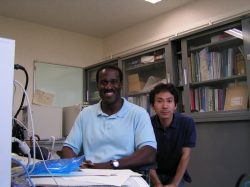
This grant enabled the continuation of the research collaboration between Wade Sisk (UNC Charlotte) and Nobuaki Tanaka (Shinshu University). Funds supported a one-month foreign research visit by twin sisters Chaevia and Chaevien Clendinen in Tanaka’s laboratory resulting in a peer-reviewed publication. Both went on to earn doctorates in molecular biology and biochemistry. Undergraduates Chaevia and Chaevien Clendinen carried out energy transfer and photodegradation studies of polymer-dispersed Perylene Red in the presence of HITC and DTTC dyes in the laboratories of Prof. Wade Sisk at UNC
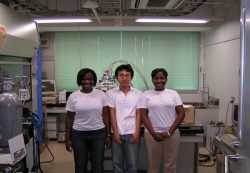
Charlotte and Prof. Nobuaki Tanaka at Shinshu University, Japan.
Dr. Wade Sisk, Office of Science, U.S. Department of Energy, Washington, DC
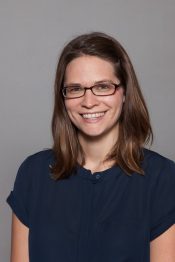
My PRF grant was the first grant I received as a young independent principal investigator. This grant was critical to establish a vibrant undergraduate research lab in organic and polymer chemistry, and supported a number of students summer undergraduate research experiences in preparation for their careers in science and medicine. Due in part to PRF support, I've been able to publish and secure larger grants to support the lab. I am going up for tenure this year and can't thank PRF enough for the support to establish the lab and help to position us where we are now. I definitely plan to apply for new direction funding in the future!
Dr. Christina B. Cooley, Trinity University, San Antonio, TX
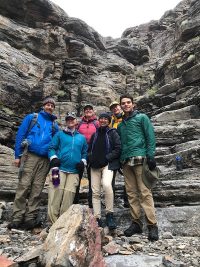
Our funded ACS-PRF grant, Testing Links Between Marine Anoxia and Mercury Enrichments During the late Cambrian SPICE Event, has been impactful on my career because it has enabled me to move into a new research area, understanding a poorly understood geochemical proxy, while building a significant new collaboration with D. Jones at Amherst College. He and I worked closely in the writing of the initial SPICE/Hg paper that was published this year (Pruss et al., 2019), and we co-led two field excursions in summer 2019. As a result, I have furthered my understanding of Hg in sedimentary systems and generated numerous projects for undergraduate students. In total, 7 students were involved in the field research in summer 2019. Five undergraduate women from Smith were supported in their field work, including one student who is from a group underrepresented in Geosciences. Two others accompanied us in the field from Amherst College. These students worked together as a team and collaborated on all aspects of the field collection and further analysis. The students reflected very positively on their field experiences – from the days-long learning with their professors and peers to the sense of community that happens when people travel and live together.
Dr. Sara B. Pruss, Smith College, Northampton, MA
I know that I am not unique (even in my own department) but the ACS-PRF award was the single most important bridge from early to mid career. For a PI at a PUI the fund is indispensable as a means for maximizing the undergraduate research experience. Thank you!
Dr. Scott A. Van Arman, Franklin & Marshall College, Lancaster, PA
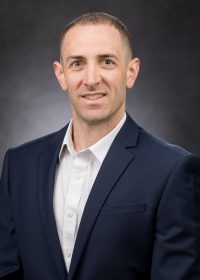
The ACS PRF Undergraduate New Investigator was the first externally funded project in our lab of undergraduate students at Providence College. During the award period, we were interested in the synthesis of substituted nitrogen-containing heterocycles. Our goal was to use transition metal catalysis to rapidly synthesize molecules containing the pyrido[3,4-b]indole and pyrido[2,3-b]indole core scaffolds. We eventually found that these heterocycles could be synthesized rapidly using two different methods - a sequential Rh(I)-catalyzed [2+2+2] cyclotrimerization and a tandem Pd-mediated Sonogashira/[2+2+2] cyclotrimerization - in good yields and high functional group compatibility. We reported our work in scholarly journals in the field of organic chemistry, all with undergraduate coauthors. This award also laid the foundation for earning tenure and promotion, securing two National Science Foundation Research at Undergraduate Institutions awards, and helped students from the lab gain entry into graduate school, professional school, and the workforce.
Dr. Seann Mulcahy, Providence College, RI
PRF has supported my research through several Type B grants. Most importantly they have provided the Match for 5 Project SEED summer programs. This has had a huge impact on my research and my Department. We have great success with engaging the native American community in Montana and the program has opened the door to us for the the HS Partners in Science Program. We now have great interaction and recruitment in chemistry because of these two programs.
Dr. Edward Rosenberg, University of Montana, Missoula, MT
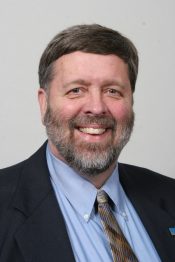
Bert E. Holmes has taught at three undergraduate, liberal-arts institutions and early on his research was supported by three Research Corporation and two Petroleum Research Funds-Type B grants. The PRF awards were especially impactful as models for NSF proposals because the formats were very similar. He wrote his first NSF-RUI in 1991, and since then his research has been supported by NSF awards for 26 consecutive years. He was an NSF Program Officer from 2008-2011. Since 2010, he has 25 research publications, mainly in the J. Phys. Chem. A, with 52 undergraduate co-authors focusing on experimental and computational investigations of gas-phase reaction dynamics of hydrohalocarbons. He has seven publications related to developing a research-rich curriculum that can transform a chemistry department. He has earned three prestigious national awards: (1) The CUR Fellows Award that is “presented to individuals who have developed internationally respected research programs involving undergraduate students”; (2) The Catalyst Award from the Chemical Manufacturers Association for “excellence in chemistry teaching”, and (3) The ACS Award for Research at an Undergraduate Institution to honor a “chemistry faculty member whose research in an undergraduate setting has achieved wide recognition.” Currently he is the Philip G. Carson Distinguished Chair of Science at the University of North Carolina Asheville.
Dr. Bert E. Holmes, University of North Carolina Asheville
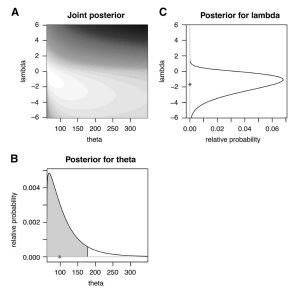
I received a PRF starter grant early in my career, which helped me earn tenure. With PRF support, I was able to publish a paper with three undergraduate co-authors that is central to my research in paleontology and biostratigraphy. Thank you and happy anniversary!
Dr. Steve C. Wang, Swarthmore College, PA
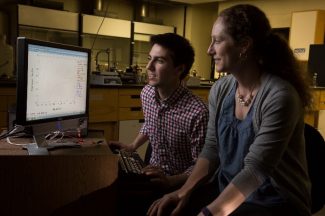
My PRF grant had a tremendous impact on my career as well as that of one of my first undergraduate research students, Sam Hendel. Sam Hendel, Amherst College class of 2015, was a mathematics and chemistry double major. During the summer of 2013, Sam applied for research opportunities outside of Amherst College and, surprisingly, received no offers. Upset by this outcome, Sam was ready to head back home and find other (non-science) summer work. Because Sam was a truly stellar student with an infectiously positive attitude, when I heard of Sam’s situation, I immediately offered him a position in my lab for the summer funded by my PRF grant and he accepted.
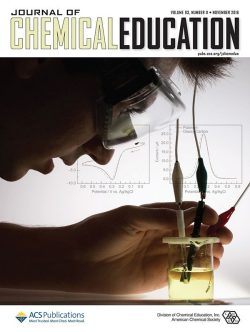
This offer may have been the best decision I ever made at Amherst. Sam was a brilliant, charismatic, hard-working, and engaged student. Sam worked in my lab for the rest of his Amherst career. He completed an honors thesis, and was undoubtedly the best thesis student I ever had! Sam spent a post-baccalaureate year (AY 15-16) working in my laboratory, before heading to the Massachusetts Institute of Technology for graduate school in chemistry. During his time in my lab, Sam transformed from my student to my colleague in research. Sam’s impact on my laboratory has been vast and enduring. Sam was co-author on two publications. One of his publications was featured on the cover page of the journal Chemical Education. This success story was made possible because I had the flexibility to support him on short notice with my PRF grant. Figure 1. (above) Sam Hendel and Prof. Elizabeth Young circa October 2016. Figure 2. (right) Picture of Sam Hendel as part of the November 2016 cover of Chemical Education.
Dr. Elizabeth R. Young, Lehigh University, Bethlehem, PA
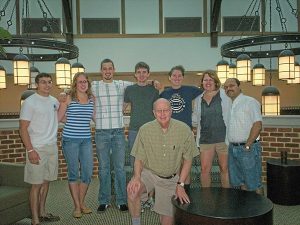
I feel very fortunate the ACS-PRF B program continuously funded my research projects in organic synthesis with my undergraduate students for the period indicated. During my 42-year academic career (1978-2020) I have involved 147 undergrads in my research projects with 36 students going on to receive the Ph.D. in chemistry with another 5 still in progress. Of these students 3 received NSF or DOD predoctoral fellowships. This work lead to 108 refereed journal publications and 209 professional presentations. Our work during this period focused on studying and developing new and novel synthetic reactions using vinylogous iminium salts and related derivatives for the construction of important heterocycle containing molecules. Due to the accomplishments of my many students, I received the ACS National Award for Research at an Undergraduate Institution (2008), became a Fellow of the American Chemical Society (2017) and a Fellow of the Council on Undergraduate Research (2008). The continuous funding by the ACS-PRF B program during the indicated period provided the solid foundation for the many accomplishments of my former students and for this I am deeply grateful.
Dr. John Gupton, University of Richmond, VA
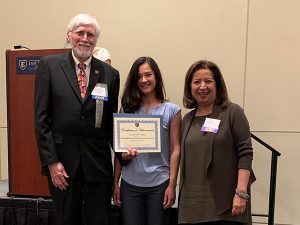
The main goal of the project “Superacidic catalysts for alkylation of benzene by olefins” supported by the grant 58891-UR5 was the synthesis of mesoporous catalysts containing immobilized heteropolyacids. One graduate and three undergraduate students were involved in this work. One of them, Anastasia Kuvayskaya, successfully prepared and defended her MS thesis based on obtained results. Anastasia spent countless hours in the laboratory while running reactions, collecting and analyzing obtained data. This work allowed her to experience what it is like to be a chemist involved in scientific research. She have improved previously developed research skills, learned new laboratory techniques, and expanded knowledge of analytical instrumentation. Anastasia had a privilege of representing ETSU at numerous regional and national conferences, and winning three awards for best presentations. One of these awards was the first prize in the 2019 Appalachian Students Research Forum (in the picture). Results of the first step of this project were recently published in Catalysis Letters. Anastasia’s passion for chemistry research led her to the acceptance to PhD program in Colorado School of Mines. In general, this project was very beneficial for the students who obtained their early research experience and presented their findings on scientific meetings.
Dr. Aleksey N. Vasiliev, East Tennessee State University, Johnson City, TN
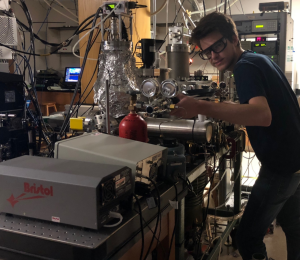
The ACS PRF Undergraduate New Investigator grant that I was awarded in 2015 has had a tremendous impact on my early career, in addition to the career trajectories of my undergraduate research students. Part of the funds were used to support two undergraduate students who built a sophisticated helium nanodroplet isolation spectrometer in the summer of 2016 and 2017. The students gained valuable experience in instrument development and laser spectroscopy, and have since gone on to technically demanding engineering related professions in the military and industry. This is the first time one of these advanced physical chemistry apparatuses has been built at a primarily undergraduate institution. It provides a unique training ground for not only my research students, but also students who take the physical chemistry lab course at James Madison University. Students performed research (and co-authored papers) that utilized this spectrometer which provided the necessary backing support for a successful Cottrell Scholar Award application in 2019. Photo: Isaac Miller posing next to the machine he helped build and automate (used with permission).
Dr. Paul L. Raston, James Madison University, Harrisonburg, VA
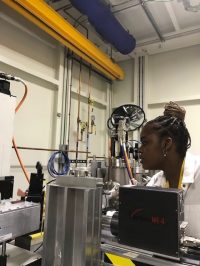
Our ACS-PRF award is titled: Understanding Synergistic Effects of Nano-confinement and Catalysis on Methane Gas and Syn-Gas Conversion to Liquid Fuels using Synchrotron X-ray and Neutron Characterization. With these funds, I have been able to transform my research program from one which solely looked at inorganic hydrides using our advanced characterization tools at X-ray and neutron facilities to examining inorganic materials. The impacts to my students have been equally transformative. In total, the support has permitted me to supervise five undergraduate student researchers who traveled to Argonne National Laboratory’s Advanced Photon Source for collection of data from their samples. Two of those students were able to perform follow up measurements at Brookhaven National Laboratory’s NSLS-II. Below are photos of one of the students, Denise Omoruyi, collecting data at the NSLS-II.
Dr. Tabbetha A. Dobbins, Rowan University, Glassboro, NJ
A 2012 UR ACS PRF grant funded our project in the area of antifreeze coatings to prevent the formation of gas hydrates in pipelines. This was the first support my research team received for this project. The grant supported the training of six students, and resulted in a publication of our results in Energy Fuels. In addition, the work positioned my research team to build a new collaboration with two researchers at the neighboring flagship state institution as well as a US Army researcher located at a lab within the state. This team has an ongoing project funded by NASA EPSCoR to investigate antifreeze proteins and peptide mimetic as possible coatings to minimize icing or ice adhesion. The research is very interdisciplinary and continues to provide rich training for my undergraduate researchers. It has also drawn the attention of other collaborators interested in cryopreservation and the general properties of ice. The ACS grant provided an important foundation for the existing project, and therefore was critical in gaining entry into this exciting field of research. My students and I will forever be indebted to the generosity and support of the ACS PRF!
Dr. Paul W. Baures, Keene State College, NH
My PRF grant allowed me to purchase essential reagents for my research project. This allowed me to support undergraduate researchers in my lab, led to several papers, and ultimately allowed me to secure tenure at my current institution.
Dr. Donald J. Hirsh, The College of New Jersay, Ewing, NJ
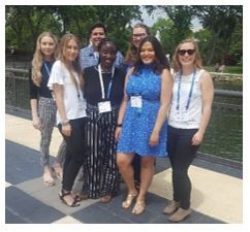
Funding from the ACS PRF has provided supplies, and more importantly student support, which has helped me publish articles and provide student training, both of which are essential for tenure at an undergraduate focused institution. Collecting fundamental data laid the groundwork for successfully securing funding from the National Science Foundation. PRF funds also allowed undergraduate students to present their work at multiple conferences. One poster presentation at the Emerging Researchers National Conference in STEM won third place in the Materials Science Division. Five undergraduates and one M.S. student also attended the National Meeting of the American Chemical Society where they presented posters in technical sessions and attended a variety of networking functions. Students in the Jenkins group have been able to learn polymer synthesis, instrumentation techniques, problem solving, and scientific communication skills. All of these experiences have prepared them to be successful after graduation. Funding for student wages allowed me to expand the group including students in their senior year, which helped them gain research experience before graduating. Thus far, all of my research students have remained in STEM to either pursue their PhD’s or are now working in the chemical industry. Figure: Jenkins research group at ACS National Meeting, Spring 2019.
Dr. Courtney Jenkins, Idaho State University, Pocatello, ID
Two PRF grants were awarded to me during my first five years at Southeastern, and both had an enormous impact on my career, in particular, as Southeastern is a primary undergraduate institution, and expectations to apply for national-level funding are low. My first PRF grant was the starter grant, I prepared right after accepting my first independent position. I had only been a short time in the US at that point, and was quite astounded to be awarded a starter grant on my very first submission. The award complemented my startup funds substantially and helped me to establish a vastly improved lab. After two years, I applied for a regular PRF three-year research grant, which was again awarded. This award gave me the time to build a well-balanced research program of introductory, intermediate, and graduate level projects, a reorientation critical for any researcher working at an RUI. Thus, it is hard to underemphasize the impact on these two PRF awards on my early career.
Dr. Thomas Sommerfeld, Southeastern Louisiana University, Hammond, LA
The support of the Petroleum Research Fund has been very influential in the development of my research program focused on polariton chemistry. The grant has now funded five undergraduate research students over the previous 1.5 years. These students have gained invaluable experience in designing experiments, reading literature, and writing code for data analysis and instrument control. The funding also provided equipment and other supplies that have accelerated the progress of the project and led to a recent publication in ACS Photonics (Tuning vibrational strong coupling with co-resonators, 2019, 6, 2405-2412). The students have also given local poster presentations and seminars and presented at the ACS national meeting. The research enabled by the Petroleum Research Fund has had long lasting effects on students, where many cite their research experience as being a key factor in their decision to attend graduate school.
Dr. Justin R. Sparks, Muhlenberg College, Allentown, PA
PRF research support has enabled me to address the gap between high quality undergraduate education and research at my institution. The opportunity for undergraduate students to carryout research in their field of study is a unique learning experience. I was fortunate to recruit a non-traditional student from my general chemistry class last fall. After a five-year break from college, this student returned last fall as a pre-optometry major. After only one semester of working on PRF sponsored research he realized his love and passion for chemistry, leading him to switch his major to a B.A. in Chemistry with a minor in Mathematics. Because of this, I can attest that PRF has substantially helped in enhancing the life of this student both academically and professionally.
Dr. Luis A. Rivera-Rivera, Ferris State University, Big Rapids, MI
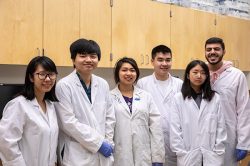
The ACS PRF UNI grant supports our research on the design and synthesis of surface supported zeolitic imidazolate frameworks (ZIFs) for natural gas purification. More importantly, it provides inclusive and accessible education opportunities for undergraduate students at California State University Long Beach (CSULB). So far, four undergraduate students and two MS graduate students have been funded by the PRF grant. Five of them are from under-represented racial/ethnic minority groups. My students and I have published three peer-reviewed papers based on the funded research. With the support of PRF grant, we have extended our work on synthesizing novel zeolite and ZIF composite materials. Students have gained invaluable research experience and developed wet-chemistry skills which are essential for their future careers in the STEM fields.
Dr. Fangyuan Tian, California State University, Long Beach
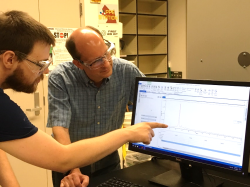
Upon starting a faculty career at Western Washington University in 1990, ACS-PRF provided crucial funding and feedback as I built a productive research program at a primarily undergraduate institution. A proposal submitted to ACS-PRF during my final year of postdoctoral studies was declined, with reviews that made me recoil at the extensive criticisms leveled at my ideas and research plan. A calming conversation with the program officer who handled my proposal, helped me focus on a crafting a revised proposal on a more novel problem and a more realistic research plan. A Type G Starter Grant in 1991 allowed us to construct a high vacuum system for IR spectral studies of adsorbed probe molecules on the surface of heterogeneous catalysts and a subsequent Type B Grant in 1993 provided critical operating funds to obtain the needed preliminary results to secure the first of a string of NSF-RUI grants in 1994 that extended for nearly 25 years. Of equal reward to making contributions to research in hydrotreating catalysis has been the opportunity to work with a large number of talented and hardworking undergraduate and M.S. students. Early students supported by ACS-PRF funding included Anthony Diaz (Professor, Central Washington University), Samantha Glazer (Associate Professor, St Lawrence University) and Garth Simpson (Professor and Associate Dean, Purdue University). Photo: Mark Bussell and Sam Baldwin (undergraduate student) analyzing research data.
Dr. Mark Bussell, Western Washington University, Bellingham, WA
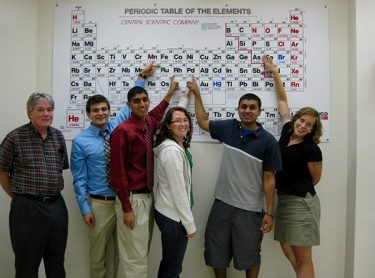
I want to thank the American Chemical Society and the Petroleum Research Fund for the opportunity to participate in the celebration of the 65th Anniversary of the PRF. My six Type B PRF Grants were essential for forming a funding base platform and in sustaining my research efforts into the coordination chemistry of crown thioethers during my 34-year career. Indeed, it is difficult to imagine where our research program would have been without PRF support. Between 1987 and 2010, our PRF grants supported nearly fifty undergraduate research students at UT-Chattanooga. The students have gone on to become instructors of chemistry at the college and high school level, industrial chemists, physicians, biomedical researchers, lawyers, forensic scientists, and pharmacists. Also, this is a diverse group. Nearly half of them are women, and the research students include first generation college students from rural Appalachia, African Americans, members of the LGBTQ community, Native Americans, and international students coming to the US to escape political turmoil. Their undergraduate research experiences, made possible through the support by PRF, were significant in shaping their future professional careers.
Dr. Gregory J. Grant, University of Tennessee at Chattanooga
The ACS-PRF grant I received was critical to providing and maintaining support for my research program following an NSF-MRI grant. Over the past decade, our department has sought to establish a more vigorous approach to undergraduate research, and the ACS-PRF grant I received was crucial in meeting that goal for my research group. The increased emphasis our department now places on undergraduate research has led to significant benefits for students, increasing their enthusiasm for the discipline and improving the rate at which they attend graduate school. Undergraduate research supported by my ACS-PRF grant has led to three peer-reviewed publications (having a total of 14 undergraduate authors) in the following journals: Analytical Chemistry, Langmuir, and the Journal of Mass Spectrometry. This is one of the highest publication rates from a grant award in my department and was only achievable due to the funding provided by the ACS-PRF.
Dr. Brian W. Gregory, Samford University, Birmingham, AL
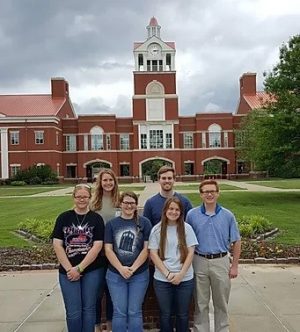
The PRF-UNI grant (2013-16) I received had a profound impact on my ability to conduct research and train undergraduate students at Murray State University. We were able to complete several published studies on ion-containing polymers, leading to additional grant opportunities (including a recent PRF-UR award) and presentations and regional/national professional meetings. Personally, the grant award was key in my ability to earn tenure and promotion. All undergraduates who were supported by this grant (12 in all) have since graduated from MSU, and all of them are currently employed or in medical/graduate school. Having the ability to support and work with undergraduates during the summer is an incredibly rewarding experience. Not only do the students learn valuable laboratory and interpersonal skills, but I also get a chance to learn more about them personally. Such a connection is often not possible in a traditional classroom setting. Since the grant award, the Miller group continues to work with ion-containing polymers and has recently expanded into applications such as gas separation membranes and batteries. With the recently awarded PRF-UR grant, we will explore phosphonium-containing ionenes for their thermal and conductive properties. My students and I would like to thank ACS-PRF for their continued support!
Dr. Kevin M. Miller, Murray State University, Murray, KY
For many faculty at primarily undergraduate institutions, a research grant from the American Chemical Society Petroleum Research Fund provides critical assistance to launch an area of investigation and support an undergraduate research group. Several awards from ACS-PRF provided such pivotal funding in my career. Today’s junior faculty often have the luxury of a start-up package to establish a research laboratory. That was not the case in my era, and I feel very fortunate that grant programs such as ACS PRF recognized the importance of supporting the research activities of new faculty, particularly those at undergraduate institutions. Even after years of successful research productivity, external funding, and collaborations that had enabled me to attain full professor, ACS PRF was there for me when I decided to carve out a new area of exploration that re-inspired me and allowed my research group to continue to make important scientific contributions. This year I received the ACS Award for Research at an Undergraduate Institution, and I include ACS PRF among the many entities that contributed to this honor. Thank you ACS PRF and congratulations on 65 years of leadership in the chemistry research enterprise.
Dr. Kerry Karukstis, Harvey Mudd College, Claremont, CA
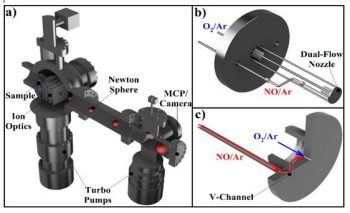
The ACS PRF has greatly impacted both the PI and students’ careers by funding our research to characterize the reactive and nonreactive electronic quenching channels of NO (A2+) with molecular partners prevalent in combustion. Ultimately, we aim to improve predictive combustion models and to inform strategic optimization of next-generation engine technologies. In order to carry out the research, we constructed and implemented a novel dual-flow pulse valve shown in Figure 1 that facilitates the two reagent gases converging only at the exit of the pulse valve to limit contribution from NO and O2 reaction. Selected as an Editor’s Pick in J. Chem. Phys. and accepted as a part of the JCP Emerging Investigators Special Collection, we published our results describing the nonreactive collisional quenching of NO (A2+) with O2 (X3g-), highlighting the nonadiabatic dynamics that facilitate energy transfer. By characterizing the collisional quenching signatures of NO (A2+) with O2 (and other molecular partners), this may open up new research avenues for the theoretical and modeling communities to explore molecule-molecule quenching dynamics. The grant support has enabled a total of 10 undergraduates and 1 M.S. student to conduct research during the funding period. Figure 2 shows a picture of students collecting data in our laboratory. During this time, students gained proficiency in project design of the dual-flow nozzle, carrying out experiments, and interpreting the results. The PI, M.S. student, and 3 undergraduates attended the Spring 2019 National ACS Meeting in Orlando to present our results. We also planned to show our latest results at the Spring 2020 National ACS Meeting in Philadelphia, but disruptions due the COVID-19 pandemic prevented us from doing so. However, we are continuing our research investigations to study molecules that may display a greater propensity to undergo reactive or nonreactive collisional quenching with NO (A2+).
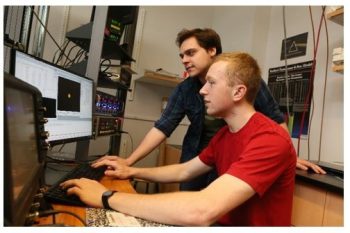
Figure 1 (Above): (a) Schematic of the velocity map imaging apparatus used to study electronic quenching dynamics. (b) NO and O2 flow through separate gas lines to limit reaction to NO2. (c) Close-up of the dual-flow pulse nozzle, in which NO flows through a ‘v-channel’ and NO only encounters O2 at the pulse valve exit. Both reagent gases are injected into a high-vacuum chamber with supersonic jet cooling prior to interaction with a pump and probe laser. Figure 2 (Right): Student researchers collecting data to investigate the electronic quenching of NO (A2+) with O2. Students have learned tangible skills such as experimental design, critical analysis and interpretation of data, and presentation of their results in peer-reviewed publications and at professional conferences.
Dr. Nathanael M. Kidwell, College of William and Mary, Williamsburg, VA
The PRF research fund has provided me the opportunity to engage students in research who might not have had the opportunity. The chance for students to completely devote themselves to summer research without worrying about how to support themselves has allowed them to become better problem solvers and young scientists. Additionally, this funding has allowed my students to propose new ideas within the scope of the proposed project and travel to the ACS national conference to present their research. The opportunities provided by this grant have helped some of my students realized they joy and challenge of independent research and lead them to pursue a science degree.
Dr. Evan E. Joslin, Sewanee The University of the South, Sewanee,TN
Preparing a PRF grant taught me to think outside of my comfort area and explore new research directions for my new research group. As being my first grant application, receiving the PRF award was very motivating and encouraging. In the PRF grant, we will be conducting a fundamental research on creating nano-sized pore network in petroleum coke. The funding helped me to recruit undergraduate researches and work along side with them on a new research direction. Participating research students will gain valuable experience in carbon materials and materials characterization. They will have the opportunity to present their research in scientific meetings allowing them to develop their communication skills and networking.
Dr. Altug S. Poyraz, Kennesaw State University, GA
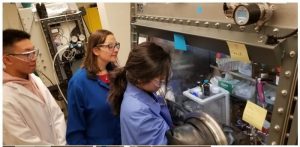
The PRF has been instrumental in helping me to start my independent career as a faculty member at a primarily undergraduate institution. I am grateful to the donors who support fundamental research in chemistry and the training of emerging and budding scientists. As a recipient of a UNI (53605) and UR (59227), I have been able to fund more than 15 research opportunities for a diverse array of undergraduates at The College of New Jersey on catalysis orientated projects.
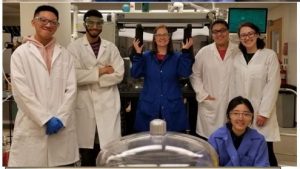
Writing these PRF proposals allowed me to focus my research plans and reflect on my mentoring and training. Mentoring and working with these students is the reason I get up in the morning and rush to work. Those “a-ha” moments in the lab are what I live for each day. The community that is built in my lab makes for a supportive place for students to share ideas, succeed, and fail. My undergraduate research scholars have been inspiring and I owe them the credit for the success of my research program. Students in my lab have gone on to pursue graduate
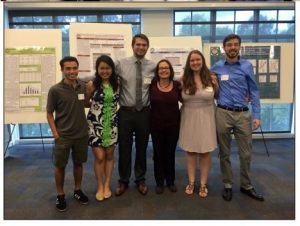
programs, both MS and PhD, in inorganic chemistry at many institutions across the country, have obtained successful industrial positions, teach high school chemistry to inspire the next generation, and careers in health-related fields. Looking back at the success of my students over the years makes me appreciate programs like this one to support students interested in doing impactful research with a faculty mentor. I continue to participate in the PRF review process, as a way to give back to the community, and am always excited to see the new ideas emerging for faculty members across the country.
Dr. Abby R. O'Connor, The College of New Jersey, Ewing, NJ
I submitted the proposal for my PRF Type GB undergraduate institution starter grant in the summer of 2007, following my second year at Oberlin College. My first undergraduate students had been able to collect some preliminary data, but we weren't yet close to a publication. I'm very grateful to the reviewers, program officers, and ACS PRF for taking a chance on me! The proposal, "Synthesis of Indole Oligomers Via Iterative Suzuki Couplings," was my first in the area of melanins, the biological pigments, which was a new area for me beyond my training. Thirteen years and fifty-five undergraduate research students late, we're still working in the same area! The PRF grant led to a NSF RUI grant, which funded a postdoctoral scholar in my lab and from which I launched a course-based undergraduate project to which over two hundred second-semester organic students have contributed to date! Our work with melanins has broadened beyond synthetic chemistry but it remains a focus of the group and we're still writing papers inspired by what we learned from the PRF grant.
Dr. Jason Belitsky, Oberlin College, OH
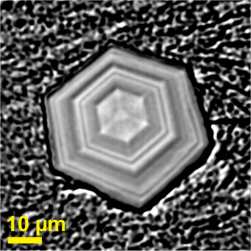
The ACS PRF award has given me the opportunity to advance my research in the field of clathrate (or gas) hydrates, which are composed of small organic molecules trapped in cages formed by water molecules. Using the awarded funds, my laboratory has developed new methods of growing micron-sized hydrates and studying the mechanism by which potential inhibitors interact with the crystal surface. We found new inhibitors that bind to the surface of the hydrate, and our research efforts are now concentrated on characterizing the nature of binding using fluorescence microscopy. As a faculty member in a women’s college, this award helped my efforts to encourage female undergraduates to engage with advanced research in my laboratory. This is especially important during the COVID-19 pandemic, in which undergraduates are reluctant to start working again in the laboratory, partly because of the central role of public transportation in New York City, where the campus is located.
Dr. Ran Drori, Yeshiva University, New York, NY
In 2014 I was awarded an American Chemical Society PRF-UNI grant to explore formation pathways of authigenic carbonates associated with US Gulf Coast salt domes. These funds were integral to the development of a novel research direction for my students and me. This PRF-supported project has been very fruitful, resulting in a student masters thesis, three undergraduate theses, a student first authored Nature Communications paper and several conference abstracts. In addition, the salt dome research provided a key component to my portfolio and ultimately helped me to receive tenure. Six years later (and well after the appointed funding period) this research front continues to advance in exciting new directions in part due to the knowledge base generated by the original funding. The funds provided by ACS-PRF have been the single most important contribution to my professional development this far and I am very grateful for their support.
Dr. Sean J. Loyd, California State University, Fullerton
My very first external research grant was an ACS PRF Award in 2010 which helped kick-start my research career as an Assistant Professor at the University of San Diego. I was able to combine a portion of these funds with start-up funds to purchase an X-Ray Photoelectron Spectrometer, which has been the bread-and-butter of my undergraduate research lab for the past 10 years. Two articles connected to this grant on sulfur-adsorption and removal studies were published involving 8 undergraduate coauthors, each of whom earned hands-on experience with instrumentation not normally encountered at the undergraduate level. Of these 8 students, 3 have earned Ph.D.s, 4 are currently in or have graduated from medical school, and 1 has become a secondary school chemistry teacher. Since then, I’ve been able to build on that early success to mentor over 30 students, many for multiple years, supporting their work with external awards from NSF, Research Corporation, and a Henry-Dreyfus Teacher-Scholar Award. Most of my students have also had the opportunity to present at a national ACS conference. The ACS PRF Award was truly a first stepping-stone in my career, and I sincerely appreciate all that the American Chemical Society has done for my career!
Dr. Lauren Benz, University of San Diego, CA
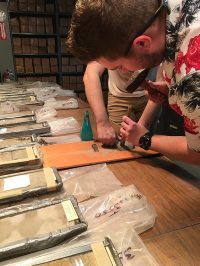
The ACS Petroleum Research Fund is my first peer-reviewed research funding. One month after I reported to my assistant professor position, I had this idea about using 3D microCT scan to better characterize pore structures of rock for CO2 sequestration. Although I didn’t have preliminary results (which are required by a number of other research funding), ACS PRF funded me, and helped me started my career and establish my research lab. With this fund, I am able to recruit two students, collect samples, purchase lab supplies, analyze samples, and conduct field works. ACS PRF also helped my students gain a lot of research experiences. The results obtained from this research will be used to apply for funding from other agencies such as National Science Foundation or Department of Energy. Photo: my students Zach Webb and Austin Fowler collecting sandstone samples at California Well Sample Repository.
Dr. Liaosha Song, California State University, Bakersfield
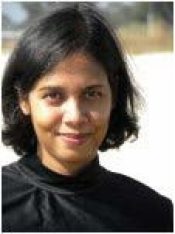
I am truly grateful to the ACS for funding my intriguing and challenging research that investigates incision timing of the Ethiopian Plateau, East African Rift System by integrating various thermochronological techniques. The PRF seed grant invigorated a major research initiative and successfully launched my career as a tenure-track faculty at Western Kentucky University (WKU), a primarily undergraduate teaching institute. As part of this grant project, I was able to establish a unique research facility at WKU named LeGo (Landscape Geodynamics) Lab, build a vibrant research team, and secure competitive external awards and honors. This PRF project has resulted in five other new projects involving dating with geochronology, fission-track, and He depth-profiling. In addition, this project led to seven publications with student co-authors in peer-reviewed journals, including Geomorphology and Precambrian Research. I’ve supervised eight undergraduate and five graduate (MS) students, who participated in various aspects of this PRF project to gain a unique and transformative learning experience. All the undergraduate students were funded to engage in research activities, the outcome of which included over 18 local and national conference presentations. All the graduate students successfully completed their Master’s degrees, and are now employed by companies, research organizations, or universities.
Dr. Nahid D.S. Gani, Western Kentucky University, Bowling Green, KY
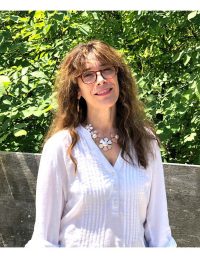
Over two decades ago, funding from a colleague's PRF-AC grant encouraged me to apply for my own ACS PRF grant. The PRF has ever since been a powerful driving force for my research at Swarthmore College. My two grants, awarded over a dozen years apart, propelled my lab's computational physics/materials research in two distinct areas: 1) Simulations of positrons in solids and 2) Jamming and clogging of matter in the presence of geometrical constraints. Each area yielded at least a decade of productivity; most recently seeding a successful grant from the NSF which will benefit four faculty members at two PUIs. Thanks to research funded by the PRF, I've given plenary and research talks, received promotions and honors, and acquired national visibility through invitations to join editorial boards, and serve on award panels and committees for the APS and NSF. Direct funding of students attracted matching funding from my institution, so that in the combined years of the two PRF grants, 15 students received funding to acquire the hard and soft skills of computational physics/materials research. They were able to write theses and posters, give talks, and coauthor papers; and have gone on to productive careers in academia and industry.
Dr. Amy L. R. Graves, Swarthmore College, PA
Funding from the Petroleum Research Fund has had a significant impact on the undergraduate researchers involved in the chemistry. Several students reported that working on the PRF-funded projects provided the spark that encouraged them to pursue a graduate degree in chemistry. Other students who worked on the projects have transitioned to positions in the chemical industry. Many of them commented that one of the most valuable aspects of the research experience was defending their work at a regional or national ACS meeting. In addition to the impact on the students, the funding has enabled us to bring several projects to fruition as well as begin investigations into new areas. My students and I are extremely grateful for the support PRF has provided!
Dr. Robert A. Stockland, Bucknell University, Lewisburg, PA
The two PRF grants I received early in my career helped me earn tenure, and allowed me to provide paid summer research positions for undergraduates, who have gone on to successful careers in science and medicine.
Dr. Jennifer E. Mihalick, University of Wisconsin-Oshkosh
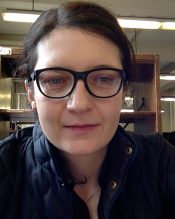
The PRF has had a tremendous impact on my research, and my career, and students in my research group. I am grateful to PRF’s support of fundamental research in my group aimed at addressing contributions of thermally-activated heavy-atom tunneling in the reaction rates of diradical forming cycloaromatizations relevant to the petroleum products. In addition to the impact on fundamental understanding of chemical reactivity and C-C bond formation, PRF’s support has had a significant effect on my career. Importantly, it has allowed me to collect theoretical data, which was used in an NSF grant application that was awarded on June 1, 2020. In addition, I was delighted to chair a session entitled “New Frontiers: From Chemical Evolution to Quantum Computing” at the Physical Organic Chemistry Gordon Research Conference in 2019 at Holderness School, NH and was nominated to be a vice co-chair of this Gordon conference in 2021, although another pair of scientists were elected. The PRF has also enabled me to support undergraduate students in my research group, such as Kitae Kwon, who is now in the Ph.D. program at Duke University. The grant also covered the cost of students to participate in local and national research conferences.
Dr. Edyta M. Greer, Baruch College, City University of New York
In 1985 I was a newly minted Ph.D. in organic chemistry and had just landed a position as Assistant Professor at the State University of New York College at Buffalo (Buffalo State College). During the academic year I wrote my first grant, a PRF–G grant for funding at a predominantly undergraduate institution. I was overjoyed when my proposal was funded. The research went well and the work was published. And so it began. Over the course of a 33-year career I wrote and received funding for a total of five PFR grants. While I did receive funding from other sources, PRF was the predominant source throughout my career. I retired at the end of the spring semester in 2018. As I look back over my records, I can trace the ongoing careers of 25 –30 students, who worked with me on projects funded by PRF and many of whom received summer research stipends from the grants. Over ten papers published papers, co-authored by these students, can be directly traced back to the specific projects funded by PRF. Many of these students were able to attend ACS meetings and make presentations as a result of this funding. I would not have been able to provide these students with the level of research experience they received if it had not been for PRF. As I think back over my career, I realize what a wonderful opportunity for funding PRF type B grants have provided to those of us in predominantly undergraduate institutions.
Dr. Gregory W. Ebert, State University of New York, College at Buffalo
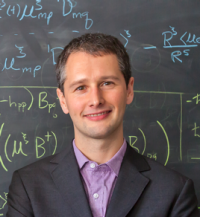
The PRF has been incredibly impactful for my early career, providing seed funding for a project which has grown into a substantial research direction in my group. In particular, the emphasis on student support creates a clear priority for high-quality mentorship and student engagement in research. A number of undergraduate and masters students have benefited from their involvement in the PRF project; their work has resulted in several publications, and the award has also enabled me to travel with my students to present our work at regional and national meetings.
Dr. Jonathan Foley, William Paterson University, Wayne, NJ

I am extremely grateful to the ACS PRF for providing my first external funding at the start of my independent career. PRF grant funding has supported the development of a major research direction for my lab, and results generated under my PRF grant have led to several publications featuring my undergraduate students as co-authors, as well as successful application for continued funding of this project from the NSF. PRF funding has also allowed me to regularly send my undergraduate students to present their work at ACS national meetings, which is an extremely valuable experience for them.
Dr. Michael G. Campbell, Barnard College, Columbia University, New York, NY
My PRF grant helped me support two graduate students in completing their field work for their thesis research. It also provided the opportunity for eight undergraduate students to experience geological field work and laboratory sample preparations and analyses connected to the work by my graduate students. This opportunity promoted my own career because I was able to supervise solid research and publish a manuscript with my graduate students. The graduate students benefitted from the research experience, but also learned leadership and management skills to coordinate their undergraduate assistants. This grant allowed me to take my research team to the field, so both graduate students were working in the field at the same time in different locations. While I was with the students, I guided them to take the lead on their projects, identify their field goals, and create their plans to carry out those goals. The large team of undergraduate assistants helped these students learn the value of collaboration in geologic research. They provided each other with a strong support system. In the field, they encouraged each other during sometimes challenging conditions. In the lab, they worked together to complete sample preparations and learned laboratory safety and procedures.
Dr. Lisa M. Tranel, Illinois State University, Normal, IL
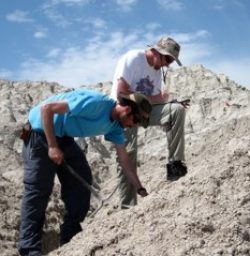
PRF at 65, a retrospective from one awardee (Harmon Maher). Greetings, I also turn 65 this year, and so PRF initiated when I was born, having, of course, absolutely no idea of the critical role PRF would have in my life. I may retire in about 5 years, but I hope PRF continues for much, much longer. Some numbers about my PRF support:
* 3 grants received, 2 with Dr. Shuster: a) sedimentologic signature of an LIP, b) diagenetically driven deformation, c) fracture variation/domains within geologic units (ongoing).
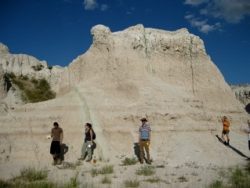
* 28 undergraduates supported in undergraduate research (8 went on to grad school).
* 10 senior theses completed (two more in progress).
* 15 professional presentations (mainly GSA) 10 by undergraduates, 5 by faculty.
* 5 refereed publications directly related, 3 with student coauthors.
* More in progress.
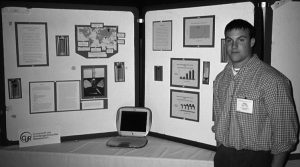
Why was/is PRF funding so crucial?
* PRF provides a perfectly scaled opportunity for geoscience research projects appropriate for an undergraduate program.
* PRF allows pursuit of two mutually compatible and linked goals, moving geoscience forward with research and developing career geoscientists.
* As an urban campus, our students are more non-traditional, and many work to put themselves through school. The PRF funding financially allows them to participate in undergraduate research experiences, that they would otherwise be unable to, making a difference in their long term career trajectories.
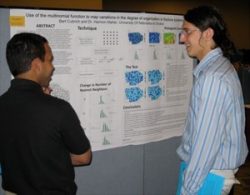
* Internally, PRF grants help establish the value of often smaller, undergraduate geoscience programs to institutional decision makers (Deans, Chancellors).
* PRF allows faculty to venture into a new area in geoscience, and, thus seeds continued research and professional development.
* PRF allows development of pedagogic expertise related to fostering undergraduate research.
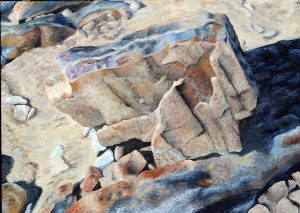
Figure 1. Collecting samples in the field.
Figure 2. Students near clastic dikes with green alteration zones, Cedar Pass, Badlands National Park.
Figures 3 and 4. Student presentations at 2002 Nebraska Academy of Science, and at 2010 Geological Society of America meeting.
Figure 5. Painting of chalcedony vein by a participant of a PRF funded field expedition.
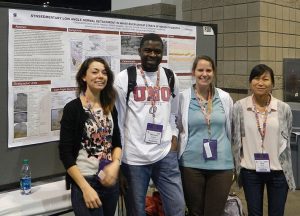
Figure 6. Students presenting at 2013 GSA meeting.
Dr. Harmon Maher, University of Nebraska at Omaha
I am happy to respond to the invitation to recall my experience with the PRF grant program. In 1974, I began as an Assistant Professor at Russell Sage College in Troy, New York. I received a PRF Type G Starter Grant, which provided summer research stipends for the years 1975, 1976 and 1977. There was even enough funds remaining to provide a student stipend for the summer of 1978. I am very grateful for this financial support, which helped me to launch my independent research career. During each academic year, I supervised one or two students, who were carrying out their senior research projects as undergraduate chemistry majors. During the summers, I was able to advance the projects further on my own. During this period, I initiated work on two related research projects. The first entailed an investigation of the role of thiosulfoxides as reaction intermediates. Although phosphine sulfides are well-known stable species, the related thiosulfoxides are kinetically unstable at ordinary temperatures. I believe that we were able to provide the first convincing evidence of the role of these species as intermediates. We also examined a series of aryl allyl sulfoxides and demonstrated that the rearrangement pathway to disulfides could be favored by using electron-withdrawing aryl groups (like para-nitrophenyl) to stabilize the thiosulfoxide intermediate, slowing the competing pathway of spontaneous desulfurization. We were able to publish three communications in Tetrahedron Letters reporting on these results. There were five student co-authors on these papers: Sylvia Kourou Daley, Barbara Daly, Kathleen McGlynn, Alayne Schroll and Lynn James San Filippo. In later years, Alayne completed her Ph.D. at the University of Minnesota, and Lynn completed her Ph.D. at New Mexico State. During 1977-78, the final year of my PRF grant support, I initiated a spin-off investigation of [1,3]-allylic rearrangements. We completed the first systematic study of thermal [1,3]-allylic rearrangements in a structurally related series of sulfides, sulfoxides and sulfones. These results were also published in a Tetrahedron Letters communication, this one with three student co-authors: Lisa Deuring, Pamela Bentley and Susan Fisk. Lisa went on to complete her Ph.D. at Columbia University. Kathleen used her PRF stipend during the summer of 1978 to develop HPLC methods, enabling us to distinguish among our sulfides, disulfides, sulfoxides and sulfones. Over the subsequent years, I remained in periodic touch with all of these former research students. During the year approaching my retirement from Russell Sage in 2010, I corresponded with all eight of these women, who all had distinguished careers, built upon their chemistry backgrounds.
Dr. Raymond D. Baechler, Russell Sage College, Troy, NY

